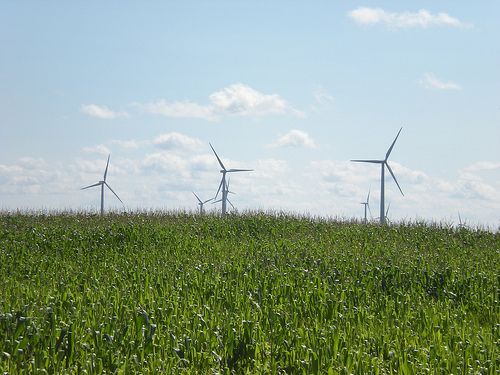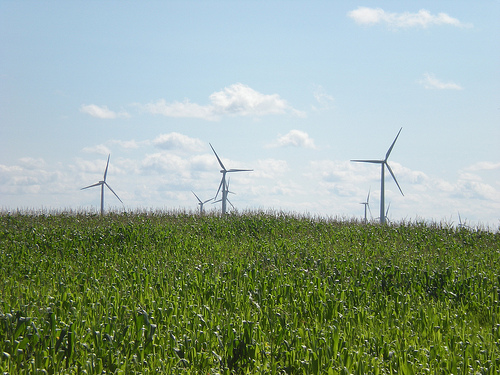 Michigan would rather pay a little more for energy if it’s better for the local economy.Photo: Alex GorzenThis post originally appeared on Energy Self-Reliant States, a resource of the Institute for Local Self-Reliance’s New Rules Project.
Michigan would rather pay a little more for energy if it’s better for the local economy.Photo: Alex GorzenThis post originally appeared on Energy Self-Reliant States, a resource of the Institute for Local Self-Reliance’s New Rules Project.
The large transmission authority serving the upper Midwest — the Midwest Independent System Operator — has plans for new high-voltage transmission lines leading from windy states like the Dakotas to places like Michigan. The purpose is to bring renewable energy from big western wind farms to places East.
Some of these places — like Michigan — would rather do it themselves:
Michigan’s share of $16 billion worth of [high-voltage transmission] projects would be about $640 million annually. And most of these funds would be sent out of the state.
… This would happen even though Michigan already has its own state law requiring that 10 percent of its power must be generated using alternative sources by 2015. And all of that renewable-source energy must be generated within Michigan — which means electricity consumers likely won’t be buying or using power generated in other states.
The editorial doesn’t even get into the meat of the issue: that renewable electricity imports may be marginally cheaper than wind and solar power generated in Michigan, but that the economic impact of locally developed projects doesn’t show up on electricity bills.
It’s no small potatoes.
Meeting its 10 percent mandate with in-state wind power would generate $2.5 billion in economic activity for Michigan. If those projects were locally owned as well, it would add another $1.3 to $6 billion to the state’s economy. Hosting a new transmission line would generate almost nothing.
Michigan isn’t alone in its desire for self-reliance. Ten East Coast governors signed a letter to members of Congress to protest visions for a new nationwide network of transmission that would have them importing Midwest wind at the expense of domestically built renewable energy. And the Canadian province of Ontario developed a comprehensive clean energy program with a requirement that all renewable energy and a majority of the actual components of new renewable energy facilities come from inside Ontario.
It may seem counterintuitive that citizens would prefer more expensive electricity, but when weighed against the economic opportunity of local ownership and development, perhaps it’s no surprise.



